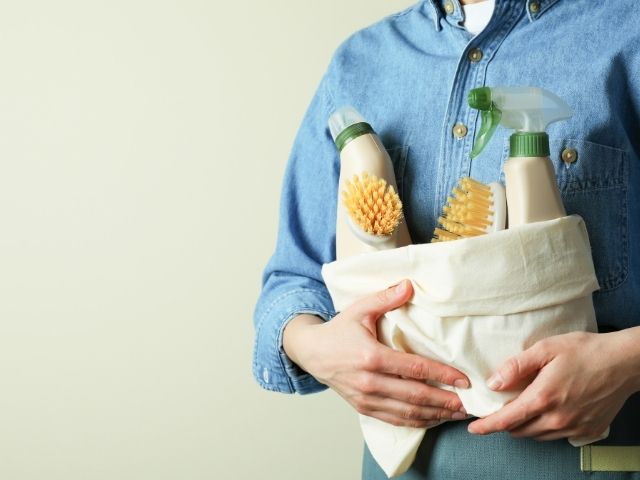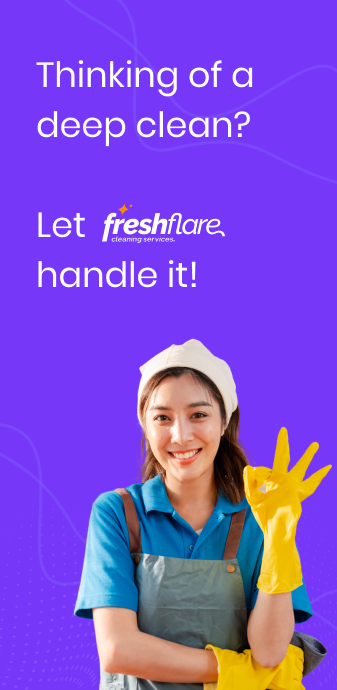In today’s world, sustainability isn’t just a buzzword—it’s a way of life. With increasing awareness about the health of our environment and our own well-being, homeowners and businesses alike are shifting toward non-toxic and sustainable cleaning options. Eco-friendly cleaning has emerged as a transformative approach that not only protects our planet but also enhances the quality of the spaces we inhabit. This blog post will explore the rise of eco-friendly cleaning, delve into its benefits, and outline best practices for incorporating non-toxic cleaning solutions into your daily routine.
The Environmental Impact of Conventional Cleaning
Traditional cleaning products often contain harsh chemicals that can have a significant negative impact on the environment and human health. Many of these chemicals contribute to indoor air pollution and water contamination, ultimately harming wildlife and ecosystems. Consider the following environmental concerns associated with conventional cleaning:
- Chemical Residue: Many cleaning agents leave behind residues that can persist in the environment.
- Air Quality Issues: Volatile organic compounds (VOCs) released from these products can worsen indoor air quality.
- Water Contamination: Runoff from chemical-laden cleaning products can pollute local water sources.
- Health Hazards: Exposure to toxic chemicals can lead to respiratory problems, skin irritations, and other health issues.
By understanding these risks, it becomes clear why the shift toward non-toxic and sustainable cleaning practices is not only beneficial but essential.
The Rise of Sustainable Cleaning Practices
Over the past decade, consumers have become increasingly conscious of the environmental and health impacts of conventional cleaning products. This shift in mindset has given rise to a wide range of sustainable cleaning options that prioritize safety, effectiveness, and environmental responsibility. Today, many manufacturers are reformulating their products with natural ingredients such as vinegar, baking soda, lemon juice, and essential oils.
Innovative cleaning methods now emphasize:
- Renewable Resources: Using ingredients derived from nature that are biodegradable and renewable.
- Reduced Chemical Footprint: Minimizing the use of synthetic chemicals that harm both people and the planet.
- Energy Efficiency: Developing cleaning systems that require less water and energy, further reducing environmental impact.
These sustainable alternatives are reshaping the cleaning industry by proving that green practices can be both efficient and effective.
Key Benefits of Sustainable & Non-Toxic Cleaning
Transitioning to sustainable cleaning practices brings numerous advantages, not only for the environment but also for personal health and household economics. Let’s explore some of the primary benefits:
Improved Indoor Air Quality
- Reduction in VOCs: By choosing products with natural ingredients, you decrease the number of volatile organic compounds (VOCs) in your home.
- Healthier Living Environment: Improved air quality can lead to better respiratory health and overall wellness for all family members.
Enhanced Safety for Families and Pets
- Non-Toxic Formulas: Natural cleaning solutions are free from harsh chemicals, reducing the risk of accidental poisoning or allergic reactions.
- Peace of Mind: Parents and pet owners can enjoy a cleaner home without worrying about the side effects of toxic substances.
Environmental Protection
- Sustainable Ingredients: Many eco-friendly cleaning products use ingredients that are renewable and biodegradable.
- Reduced Pollution: Limiting chemical runoff helps protect local water supplies and preserves ecosystems.
Cost-Effectiveness
- DIY Options: Many sustainable cleaning recipes can be made at home with inexpensive, everyday ingredients.
- Long-Term Savings: Investing in quality, long-lasting cleaning products can reduce the need for frequent repurchases.
Each of these benefits contributes to a cleaner, healthier, and more sustainable future for everyone.
Best Practices for Sustainable Cleaning
Adopting sustainable cleaning practices involves a few simple yet powerful steps that can transform your cleaning routine. Here are some practical tips and best practices to help you get started:
1. Read Labels and Choose Wisely
- Look for Certifications: Seek products that have eco-certifications such as Green Seal or EcoLogo.
- Avoid Harsh Chemicals: Steer clear of products with ammonia, chlorine, or synthetic fragrances.
2. Embrace DIY Cleaning Solutions
- Natural Ingredients: Use common household items like white vinegar, baking soda, and lemon juice to create effective cleaning solutions.
- Custom Blends: Experiment with essential oils such as tea tree, lavender, or eucalyptus for added antimicrobial benefits and pleasant scents.
- Cost Benefits: DIY recipes not only reduce exposure to chemicals but also save money in the long run.
3. Use Reusable Cleaning Tools
- Microfiber Cloths: These are an excellent alternative to disposable wipes and can be washed and reused.
- Eco-Friendly Mops and Brushes: Invest in cleaning tools that are designed to last and can be recycled or composted when no longer usable.
4. Implement Water-Conserving Techniques
- Efficient Usage: Use minimal water for cleaning tasks by dampening cloths instead of soaking surfaces.
- Reuse Water: Consider reusing water for multiple cleaning tasks where appropriate, reducing overall waste.
5. Optimize Your Routine
- Regular Maintenance: Keeping up with daily cleaning can reduce the need for deep cleans, which often require more resources.
- Scheduled Cleaning: Organize your cleaning schedule to ensure that no area is overlooked, enhancing efficiency and sustainability.
For those who prefer a professional touch, consider partnering with a service that specializes in sustainable cleaning. Fresh Flare Cleaning Services offers expert solutions that combine efficiency with eco-friendly practices to deliver exceptional results.
In your journey toward a greener home, remember that incorporating even a few of these practices can have a lasting impact. Embrace the benefits of non-toxic cleaning options and transform your space into a haven of health and sustainability.
Professional Eco-Friendly Services vs. DIY Approaches
While many homeowners enjoy the process of DIY cleaning with natural ingredients, there are significant advantages to enlisting professional services. Evaluating the pros and cons of each approach can help you decide which method suits your lifestyle and cleaning needs.
DIY Green Cleaning
- Pros:
- Cost Savings: DIY recipes are inexpensive and use readily available ingredients.
- Custom Solutions: Tailor your cleaning methods to address specific concerns, such as allergies or sensitive surfaces.
- Cons:
- Time-Consuming: Mixing and applying DIY solutions can be labor-intensive.
- Consistency Issues: Achieving the same level of cleanliness and sanitization as commercial products can sometimes be challenging.
Professional Eco-Friendly Cleaning Services
- Pros:
- Expertise: Professional services are well-versed in the latest sustainable cleaning technologies and practices.
- Time Efficiency: Save valuable time by letting experts handle your cleaning needs.
- High Standards: Consistent, thorough cleaning that meets both safety and environmental standards.
- Cons:
- Cost: While generally more expensive than DIY options, the benefits of professional service can outweigh the cost for busy households or larger spaces.
When you weigh these factors, it becomes clear that both approaches have their merits. Whether you choose to tackle cleaning on your own or seek professional help, the ultimate goal remains the same—creating a healthier, safer environment for you and your loved ones.
Conclusion
In conclusion, the transition to sustainable cleaning practices is more than just a trend; it’s a vital movement toward protecting our health and the environment. By understanding the adverse effects of conventional cleaning methods and embracing non-toxic, sustainable alternatives, you can make a significant impact on your home and community. Remember that eco-friendly cleaning isn’t just about using natural ingredients—it’s about creating a holistic approach to maintaining a clean, healthy, and vibrant living space.
Key Takeaways:
- Environmental Benefits: Reduce chemical pollution and protect natural resources.
- Health Advantages: Enhance indoor air quality and minimize health risks for you and your family.
- Cost-Effective Options: DIY solutions can save money, while professional services ensure thorough care.
- Practical Steps: Small changes in your routine can lead to big improvements in sustainability.
Now is the time to revolutionize your cleaning routine by incorporating sustainable practices into your daily life. Explore innovative non-toxic cleaning options and take advantage of the expertise offered by professionals in the field. For more insights into balancing DIY approaches with professional expertise, be sure to check out our blog on DIY green cleaning vs. professional eco-cleaning. This resource provides additional tips and comparisons to help you make informed decisions about the best cleaning practices for your home.
Embrace the future of home care and experience the transformative benefits of a cleaner, greener environment. Let your cleaning routine be a testament to your commitment to a healthier lifestyle and a more sustainable planet. Remember, every small step counts toward building a better future.





